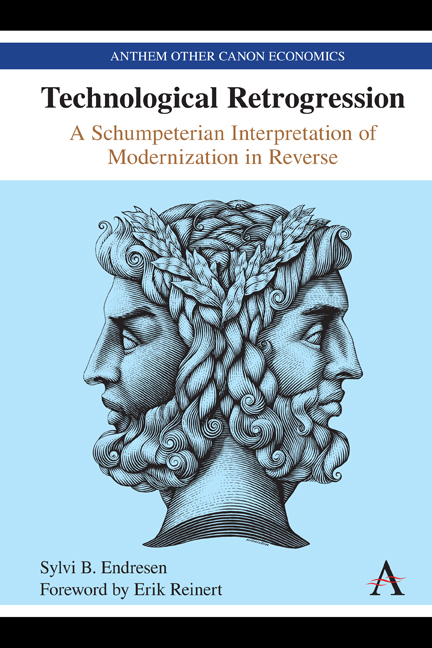Book contents
- Frontmatter
- Dedication
- Contents
- List of Figures
- Foreword
- Acknowledgements
- Preface: The Book within This Book
- Introduction: The Concept of Technological Retrogression
- 1 Challenging Linearity and Irreversibility
- 2 Perspectives on Technological Heterogeneity
- 3 Production Systems and Work Histories
- 4 Empirical Evidence of Technological Retrogression: The Sri Lankan Case
- 5 Empirical Evidence of Technological Retrogression: The Malaysian Case
- 6 A Theory of Technological Retrogression
- References
- Index
4 - Empirical Evidence of Technological Retrogression: The Sri Lankan Case
Published online by Cambridge University Press: 17 June 2021
- Frontmatter
- Dedication
- Contents
- List of Figures
- Foreword
- Acknowledgements
- Preface: The Book within This Book
- Introduction: The Concept of Technological Retrogression
- 1 Challenging Linearity and Irreversibility
- 2 Perspectives on Technological Heterogeneity
- 3 Production Systems and Work Histories
- 4 Empirical Evidence of Technological Retrogression: The Sri Lankan Case
- 5 Empirical Evidence of Technological Retrogression: The Malaysian Case
- 6 A Theory of Technological Retrogression
- References
- Index
Summary
This chapter brings you the results of my first inquiry into technological retrogression. I set out to figure out the relationship between technological modernization and level of living in Sri Lanka, but became intrigued by the news that some fishermen were returning to traditional crafts. I decided to figure out why. The empirical material has been abbreviated and thereby nuances and details are lost. A full description can be found in Endresen (1983). The work history method is labour intensive; fieldwork took about a year. I did not update the study but moved on to explore the Malaysian context brought to you in the next chapter. The snapshot provided here is thus more than 40 years of age.
Technological changes in two Sri Lankan fishing villages, Kalametiya and Hambantota in Hambantota District, were reconstructed. Technological changes from the 1950s until early 1980s are presented, and how these relate to level of living and changes in the security nets of the fisherfolk. The main finding is that diffusion of modern technology in fisheries slowed down during the 1970s, and a return to artisanal fisheries was observed. Technological retrogression within artisanal fisheries is particularly interesting: Sailing crafts become rare, and the fleet of rowing crafts expands. A comparison to the modernization of Malaysian fisheries is presented in the next chapter.
The importance of fisheries for employment in Sri Lanka is small. The total population of the fishing villages was in 1981 about 270,000, comprising 68,000 active fishermen. If employment in linked economic activities such as fish processing, marketing, boat building and ice production is included, fisheries employ 2.5 per cent of the country's workforce (Ministry of Fisheries 1980). Of the GNP in 1977, fisheries constituted only 3 per cent. As regards nutrition, the importance of fish is great because 70 per cent of all animal protein consumed comes from fish (de Mel 1976).
The continental shelf around Sri Lanka is narrow, on average about 25 km. The shelf is very rocky, and the tidal difference is small. Sri Lankan fisheries are coastal, limited by the edge of the shelf. Crude estimates give a total of 750,000 tons of fish, annual increase is estimated to about 250,000 tons, of which two- thirds are pelagic species (Sætersdal and de Bruin 1978).
- Type
- Chapter
- Information
- Technological RetrogressionA Schumpeterian Interpretation of Modernization in Reverse, pp. 115 - 138Publisher: Anthem PressPrint publication year: 2021



